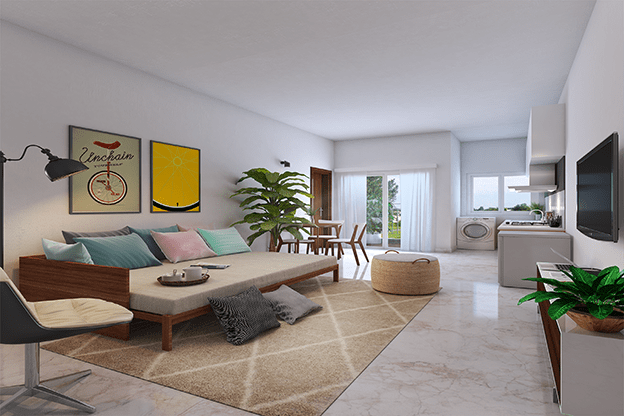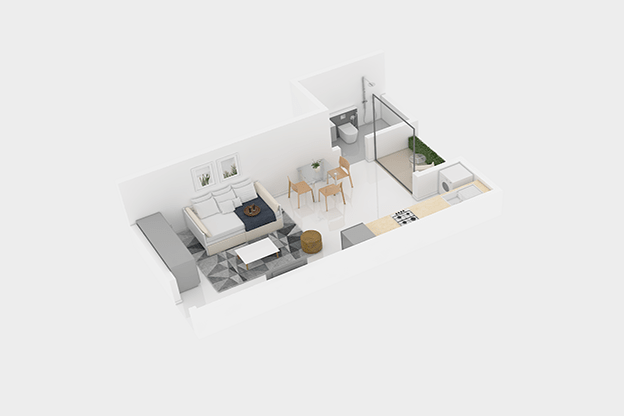-

-

+91 78295 54411
- Enquire Now


 +91 78295 54411
+91 78295 54411
The Indian economy is on a growth trajectory, and is expected to maintain the momentum for the next five years. One of the growth drivers of the economy is the young population; they are contributing significantly to the GDP by spurring demand in the core sectors. By the year 2020, it is estimated that 64 percent of our population will be in the working age group, making us the world’s youngest nation. These demographic dynamics have led to the emergence of ‘Generation Y Now’, which is directly impacting the housing sector.
The Gen Y includes working professionals between the age group of 25-34 years and the profile includes urban dwellers and married couples without kids. They are tech-savvy, hail from different cultural backgrounds, and are high-earning urban occupants, who may rewrite the established socio-economic norms. They are financially independent from an early stage; their priorities and aspirations are different from those who constitute the bulk of the existing home-buyer segment.
Today, some of the top aspirations of Gen Y include home-ownership. Surplus disposable income, ease of availing home loan and the importance given to personal space, have fuelled their dream of owning a home. That was not the case a few decades back. This generation’s need for a home is quite different from that of the previous generations. Their specifications are simple – a compact abode, which takes care of their requirements; a home that is located at a striking distance of all amenities and facilities, and more importantly, a residential unit that doesn’t go burden their wallets.

With this change in perception towards buying houses, a new segment has emerged in the residential homes category called “Compact Living”, especially in the metros and mini metros. Compact homes perfectly match the requirements, such as privacy and desire to own a home within the budget of the Gen Y. This trend has contributed to the dimensional changes to existing homes, as the demand for studio, 1 BHK and 1.5 BHK homes in metros are soaring.
In metros, single working professionals, especially are opting for either shared accommodation, apartments (2bhk and 3bhk) or paying guest facilities. Married couples tend to rent homes a little far away from their workplaces (because of the high rents in CBD and economic hubs). Investing in a compact house offers dual benefits – Firstly, they save on the rent being paid. Secondly, the new home is an investment instrument because of returns of 11%- 13.5% annually on account of appreciation of capital values of the property. The ROI will be useful when the property owner plans to buy a bigger house (in the latter part of his/her career/life). From an investment perspective too, it is a profitable proposition, as one can gain from the rental income 3.5% -5 % per annum.

Owning a compact house in the age group of 25—34 years is a well-thought out decision. Though it is still in a nascent stage, the demand for compact housing is growing. Currently, the demand is around 16,000 units per annum whereas only 1,200 units are available to address this segment. At present, this segment accounts for 2%-4% of the total residential absorption and is poised for growth.
In the last five to eight years, there has been a substantial increase in urban migration in India as the Gen Y is relocating to different cities in search of better job opportunities and livelihood. Being the hub of India’s IT/ITeS industry and the start-up capital of the country, Bengaluru has emerged as the preferred destination for many working youths. Consequently, Bengaluru tops the list for compact housing. Empirical evidence suggests that 8,350+ units (compact housing) have been launched in Bengaluru since 2009 and close to 80% of them have been sold out.
Within Bengaluru, areas like North Bengaluru, Whitefield, Sarjapura Road and Hosur Road are considered as suitable locations for compact housing projects. Their proximity to the city’s tech and economic hubs make them preferred locations considering the captive customer market. North Bengaluru has emerged as the clear winner, as the area has seen the launch of many Compact Housing projects in the last two years.
It is evident that the compact housing segment will grow bigger in the coming years. With more awareness about the product, its long-term benefits and better resale value, compact housing will emerge as a stronger segment. It has immense business potential and is expected to capture at least 25% of the entire addressable market (16,000 units) by the year 2020.